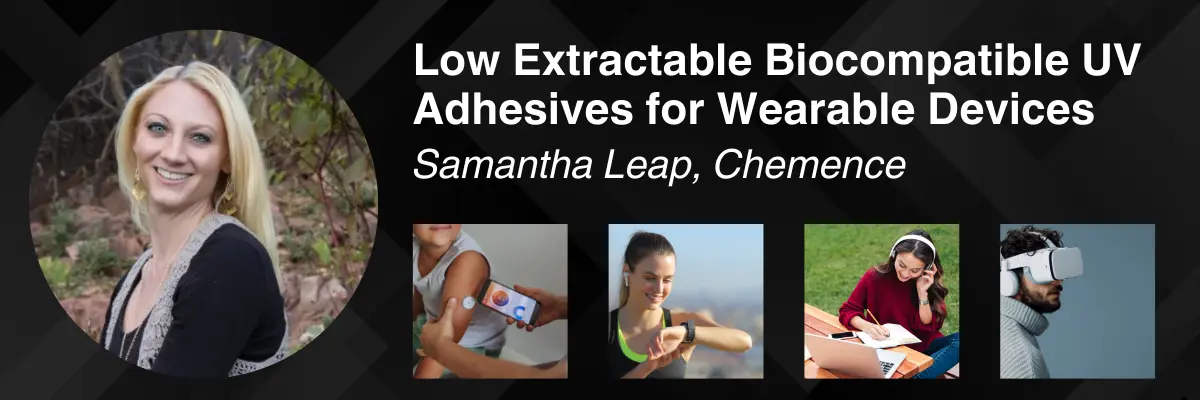
- This event has passed.
RadTech Webinar: Low Extractable Biocompatible UV Adhesives for Wearable Devices
October 10, 2024 @ 2:00 pm - 3:00 pm EDT

October 10, 2024, 2:00 PM – 3:00 PM EDT
Speaker: Samantha Leap, Chemence
Webinar Description:
Continuous glucose monitors (CGMs) are quickly gaining popularity with an estimated 2 million patients due to their ease of use. This two-week wear device allows patients to automatically check glucose levels via their phone without the need to prick their fingers multiple times a day. While this technology has been revolutionary for diabetes patients, the new device doesn’t come without issue. Skin irritation issues have been reported by patients wearing such devices caused from the UV adhesive used within the components of these devices. In fact, this issue is not seen in just CGM devices, but rather encompasses a much broader range of UV adhesives utilized in a variety of wearable devices. These wearable devices can be smart watches, headphones, GCMs, or even electronic cigarettes.
Developing safer, more biocompatible, less hazardous UV adhesives will immensely help users of all wearable devices. This research dives into the development of safer, less hazardous UV adhesives by utilizing safer monomers and oligomers when formulating and ultimately ensuring these adhesives have less extractable and leachable unreacted materials. Testing via high performance liquid chromatography (HPLC) and gas chromatography-mass spectrometry (GC-MS) yielded a 93% reduction in extractable materials when compared to a low viscosity, grade 2 ISO-10993-5 cytotoxicity certified, UV curable formulation utilized in needing bonding applications. This discussion comprises formulating strategies of both traditional acrylate adhesives and the benefits of adding in a thiol-ene as a reactive diluent. The addition of a thiol:ene as a reactive diluent yielded up to a 60% reduction in extractables by means HPLC and GSMS when compared to its pure acrylate counterpart. Adhesive requirements and their appropriate test methods, biocompatibility, and the future uses of low extractable UV adhesives will also be discussed at length.



